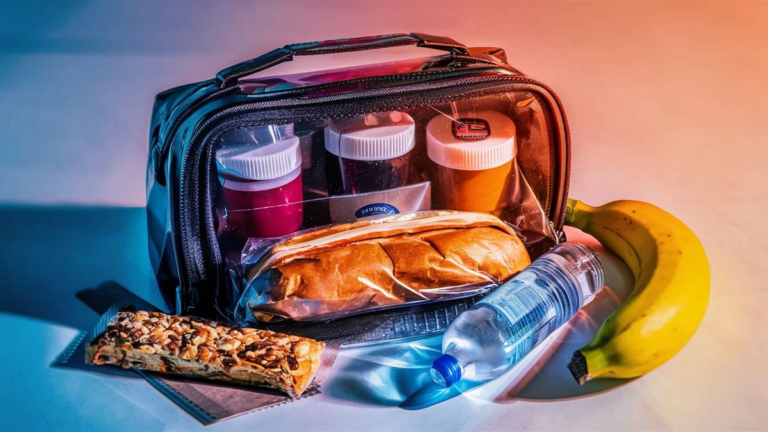When embarking on a journey via air travel, one common query that arises is, “Can you carry food on a plane?” The answer to this question involves various considerations, including airport security regulations, airline policies, and the type of food being transported.
Understanding Airport Security Regulations
Airport security measures are implemented to ensure the safety of all passengers and crew members. When it comes to carrying food on a plane, the Transportation Security Administration (TSA) has guidelines in place to govern what can be brought through security checkpoints.
Generally, solid food items such as sandwiches, fruit, and snacks are allowed through security. However, liquids, gels, and aerosols in containers larger than 3.4 ounces are subject to the TSA’s 3-1-1 rule, which requires them to be placed in a quart-sized, clear plastic bag and presented separately for inspection.
Airline Policies on Food Items
While the TSA sets the standard for security screenings, individual airlines may have their own policies regarding the transportation of food items. It’s essential to check with your specific airline before packing food for your flight, as regulations can vary.
Some airlines may restrict certain types of food, particularly those with strong odors or messy consistency, to ensure the comfort of all passengers. Additionally, there may be limitations on bringing food from outside vendors or restaurants onto the plane.
Types of Food Allowed
When determining whether you can carry food on a plane, it’s crucial to consider the type of food you plan to bring. As mentioned earlier, solid food items are generally permitted, but there are exceptions to be aware of.
For example, fresh fruits and vegetables are typically allowed, but they may be subject to additional screening. Similarly, homemade or packaged snacks are generally accepted, but items with a high liquid content, such as yogurt or pudding, may be subject to the TSA’s liquid restrictions.
Tips for Packing Food for Travel
To ensure a smooth experience when carrying food on a plane, consider the following tips:
- Choose non-perishable items that are easy to transport and consume.
- Package food securely to prevent spills or leaks during transit.
- Label homemade or packaged items clearly to expedite security screening processes.
- Be mindful of potential allergens that may affect other passengers.
In conclusion, yes, you can carry food on a plane, but it’s essential to adhere to airport security regulations and airline policies. By understanding what types of food are allowed and taking necessary precautions when packing, you can enjoy your favorite snacks and meals while traveling by air.
Frequently Asked Questions
Here are some common questions related to carrying food on a plane:
| Question | Answer |
|---|---|
| Can I bring homemade food on a plane? | Yes, homemade food is generally allowed, but it’s essential to follow TSA guidelines and package it securely. |
| Are there restrictions on bringing food from outside vendors? | Some airlines may have limitations on bringing outside food, so it’s advisable to check with your specific airline beforehand. |
| Can I bring liquid-based foods like yogurt? | Liquid-based foods may be subject to TSA’s liquid restrictions, so it’s best to pack them in containers of 3.4 ounces or less. |
| What should I do if I have allergies? | Be considerate of other passengers by avoiding foods that may trigger allergies and ensuring proper labeling of your items. |
Additional Considerations
Aside from TSA regulations and airline policies, there are other factors to keep in mind when carrying food on a plane:
- Check destination regulations: Certain countries may have restrictions on bringing food items across borders, so research before packing.
- Keep food safety in mind: Ensure perishable items are properly stored and consumed within a safe timeframe to prevent foodborne illnesses.
- Consider cultural sensitivities: Be mindful of cultural norms regarding food consumption, especially when traveling to destinations with specific dietary customs.
See also:






